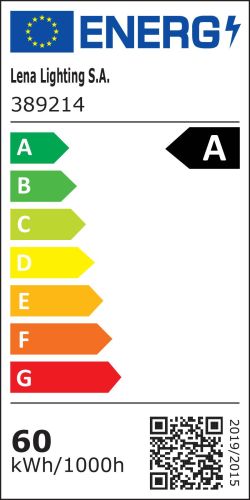New energy labels - what has changed and how to read the labels?
The energy label is a source of valuable information about the product, which has a direct bearing on subsequent use. Thanks to it we know in which energy class the device we have chosen is placed, which in times of inflation and energy crisis is of considerable importance.
Energy labels, by design, are intended to make it easier for consumers to choose the equipment that best suits their needs and requirements. That's why it's worth digging deeper into the topic and finding out what changes the European Commission has made in this regard.
More and more pros
As time has passed and more modern technologies have emerged, manufacturers of household appliances and consumer electronics have begun to introduce more sustainable manufacturing processes and far-reaching modifications within the appliances they offer. These have a direct impact on the energy efficiency and performance of the appliances. As a result, new markings appeared in the energy efficiency label, which more accurately defined the energy class of a product.
Instead of the traditional A-G scale, in which A denoted the most energy-efficient products, while F denoted appliances that consumed the most electricity, pluses were introduced: A+++, A++, and A+ and A. Not all users were happy with this turn of events, unable to understand how great the difference between the designations within a single letter was. In a word - they found it difficult to translate the power consumption of the different classes marked with pluses. It didn't take long for the European Commission to react.
Back to the A-G scale
In March 2021, new energy labels, based on the A-F scale, came into general circulation. However, there is a significant difference between the current solution and the old one. It is due to the fact that the devices appearing on the market are more and more efficient, while consuming much less electricity. An excellent example is Lena Lighting luminaires based on LED modules, which generate the highest quality light with minimal power consumption. Their great advantage is the ability to adjust the light emission to individual user needs.
The novelty is that A and B classes are now reserved for future solutions that will be even more energy efficient than those available today. In this way, we will avoid further changes in equipment labeling in a few years. Therefore, reading the scale, start with the letter C, corresponding to the A+++ label, D is equivalent to A++ class and so on up to the letter F. G then stands for the former B class, which will probably soon be a thing of the past.

What do we find on the energy label?
Energy efficiency is one of the most important criteria in the production of household appliances and consumer electronics today, not only from the point of view of the manufacturers themselves, but most importantly from the point of view of users. Rapid climate change is forcing us to modify our daily habits and make more thoughtful consumer choices. Therefore, energy labels should be as clear as possible and understandable to users.
Thus, the latest labels additionally include such information as the A to D noise scale, the amount of water consumed (in the case of washing machines) or QR codes that allow scanning with a smartphone. All this is for the convenience of consumers.